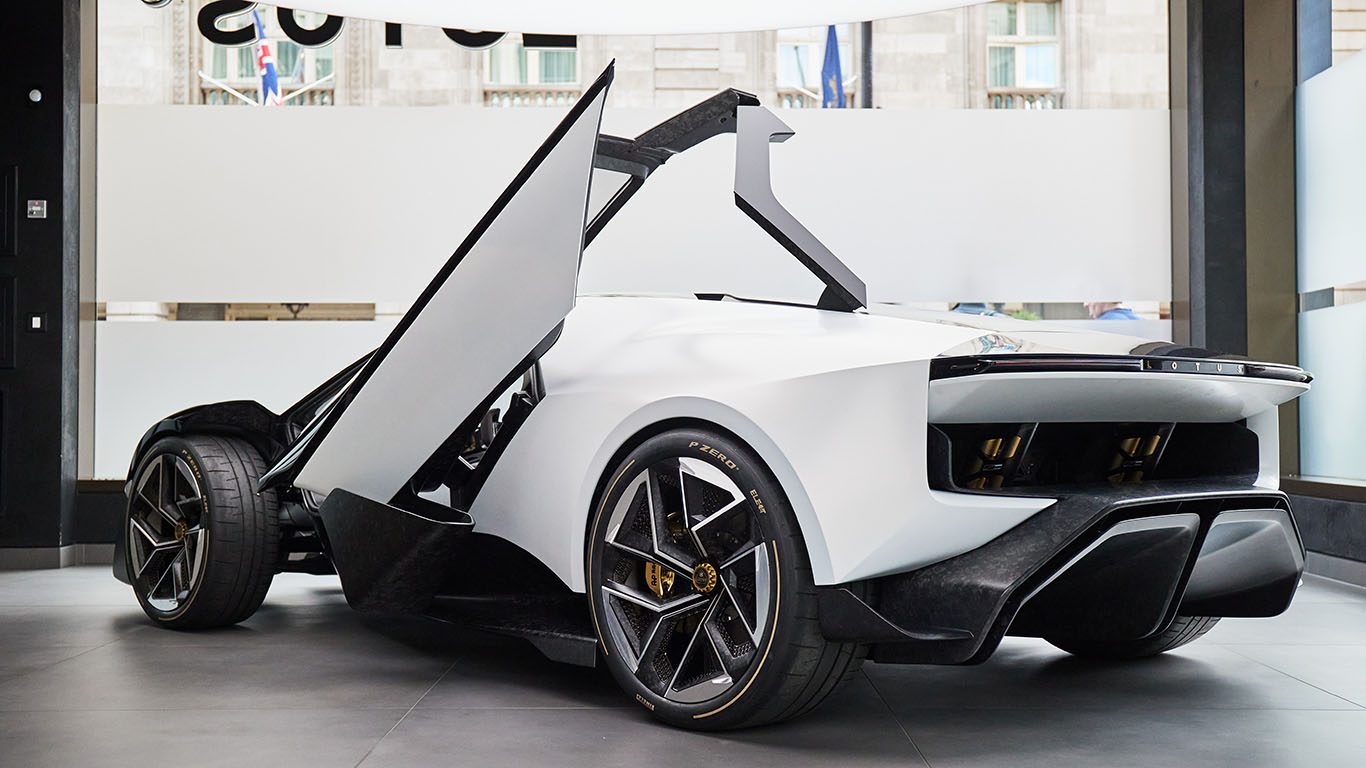Lotus Reveals Future Three-Seater Supercar
Packing 735kW, the latest Lotus concept in theory does 0-100km/h in under 2.5sec, en route to a top speed of 320km/h.
The Theory 1, as it’s known, is accessed via reverse opening wrap-over doors. It also features mirror cameras that deploy in use to lower drag. Wraparound headrests are 3D-printed and include a KEF binaural sound system. So it’s all a very futuristic concept-style vehicle. However, Lotus says much of it will end up in real product.

The Theory 1 concept pays homage to the Esprit as a brand-building performance vehicle. Obviously it also hints at what’s to come from Lotus.
Powering the sports car is a twin-motor all-wheel drive electric powertrain that has a 70kWh battery mounted next to the rear motor. That gives it the 40/60 weight balance of a rear-engined supercar. At the aft end is a 514kW electric motor while the smaller front motor is good for 221kW for a low profile front end. Supporting the car is a carbonfibre tub structure. Overall claimed weight is 1600kg, which would make it nearly 300kg lighter than the Evija.

Lotus chief creative officer, Ben Payne, said “We’re taking that [Esprit] ideology and trying to work out what it means today.” While Theory 1 is a concept, Payne reckons that around 85 per cent of its technical features are ready for production. A road-going version could follow.
From ICE power to electric
Lotus kick-started its electric reinvention under Geely ownership with the 1500kW Evija hypercar, and then the Eletre SUV and Emeya saloon. A smaller SUV is due out soon.
Payne continued “It’s about a balanced proposition with a fantastic car and a great user experience, which can give some real direct translation of our core brand back into an electric performance vehicle.”
The concept showcases Lotus’s new DNA design direction, standing for ‘Digital, Natural and Analogue’. The approach is based around employing intelligent technology and performance engineering to develop drivers’ cars.

The concept sits on a bespoke platform and measures 4490mm for length. It is split into two sections, with a heavily sculpted lower tub in exposed carbon fibre topped by a body that merges into a large glass dome roof.
Engineer Phil Hall explained that it is essentially a single-seater race car in terms of the structure, suspension and aerodynamics. But it is a road car on top of all that.
The front end features a diffuser and drag-reducing air deflectors. Meantime, the underside directs air into the cooling system. Air is also funnelled to reduce drag and optimise the downforce of the rear wing.

Exterior design lead, Amar Vaya, describes Theory 1 as “an expression of art and engineering”. Much of the running gear is visible, either through the minimal bodywork or via a large recycled-glass greenhouse. The team wanted customers to see the working innards and holes in the bodywork help reduce weight, as per the Lotus ethos.
The lower and upper sections of the body are split by a prominent line that features an OLED strip.

AP Racing provides the six-piston caliper brakes, while the car rides on Pirelli P Zero Elect tyres. The wheels are 20-inch items up front and 21-inches at the rear. Steering is by-wire and double wishbone suspension features at both ends of the car.
One in front and two to the side
The Theory 1 adopts a three-seat layout similar to that of the McLaren F1. The driver sits centrally up front, and the two passengers slightly behind on either side.
Much of the interior is left bare to showcase the recycled chopped carbon fibre tub. The minimally padded seats are sculpted directly into that. Key functional components both inside and outside the car are coloured gold, following a Lotus tradition.

The driver’s seat is fixed so the steering wheel and pedals automatically adjust to fit the driver. There is a small screen on the steering wheel, and the speedometer sits under the lip of the windscreen, within the driver’s eye line. No other screens are fitted.

The car also uses new technology to simplify operation, e.g., haptic feedback prompts when a car is in the driver’s blindspot. There is also a focus on maximising visibility and making the interior feel open. A low windscreen and raised wheel arches give the driver a clear view as to where the wheels are located. The low central driving position is good for dynamics and car control since the driver is at the centre of the vehicle’s yaw.
While the Theory 1 is officially a concept, many of its ideas are likely to feature in the Elise-replacing Type 135 sports car due in 2026.

Prior to that, Lotus will launch the Type 134 electric SUV, a sub-Eletre model that’s due next year. Expect design influences from this car.
Lotus posted a loss of £332mn in the first half of this year. It faces an uphill battle now that 100 per cent tariffs have been imposed on Chinese-built EVs in the US. Lesser but significant tariffs are also being implemented in the EU.





